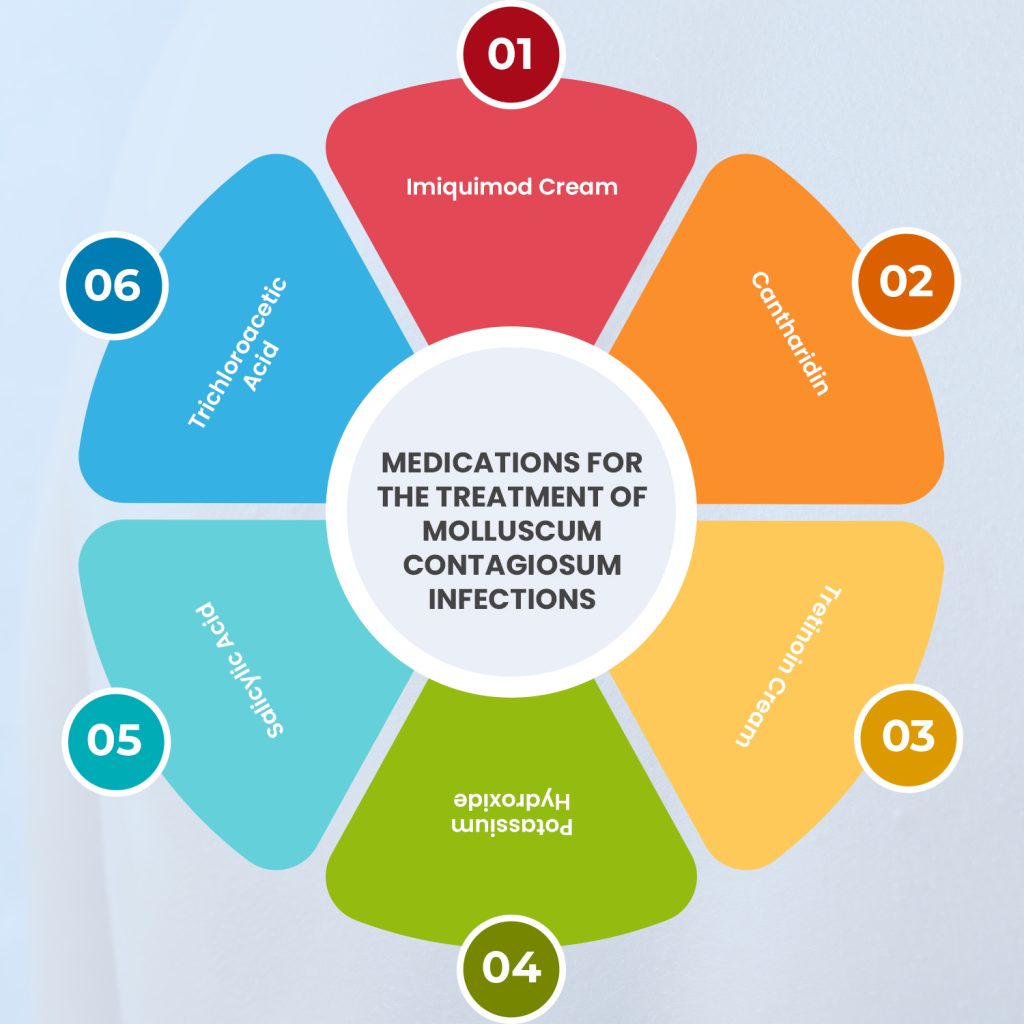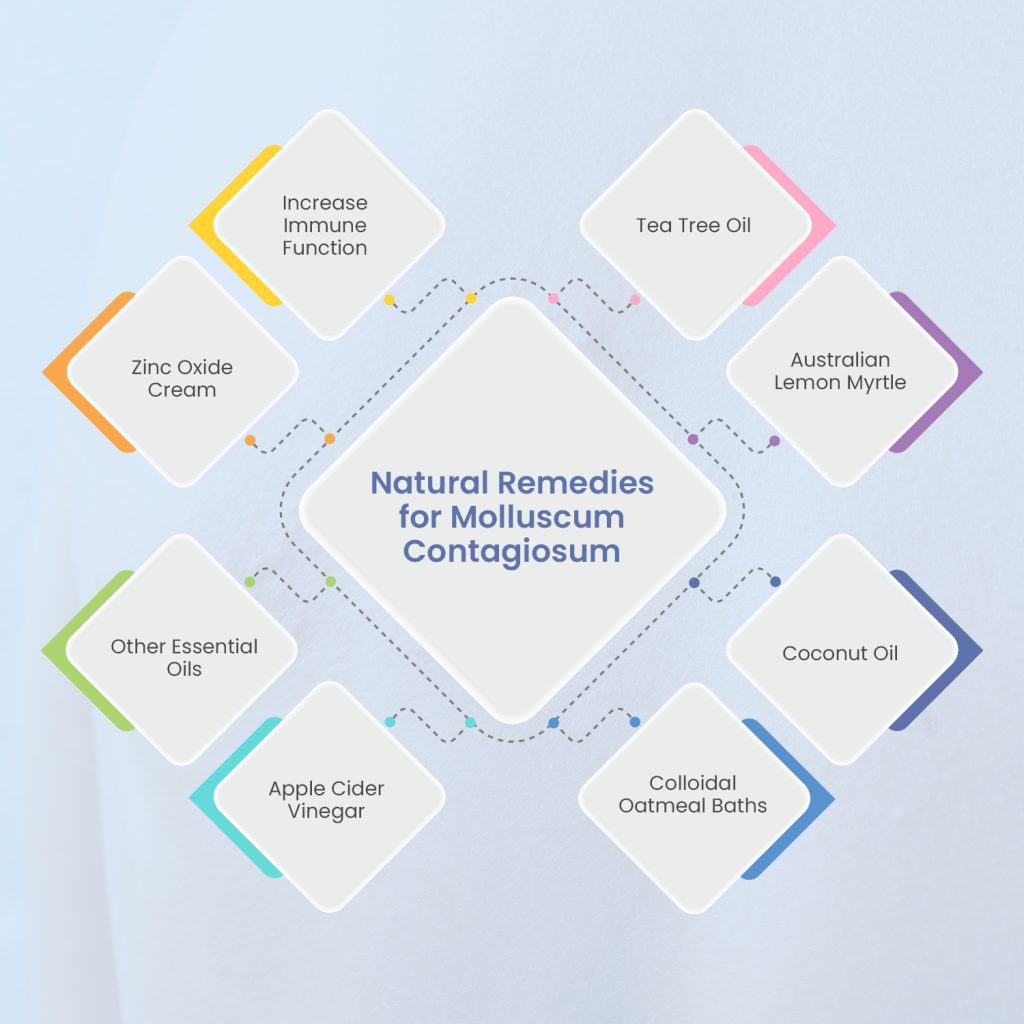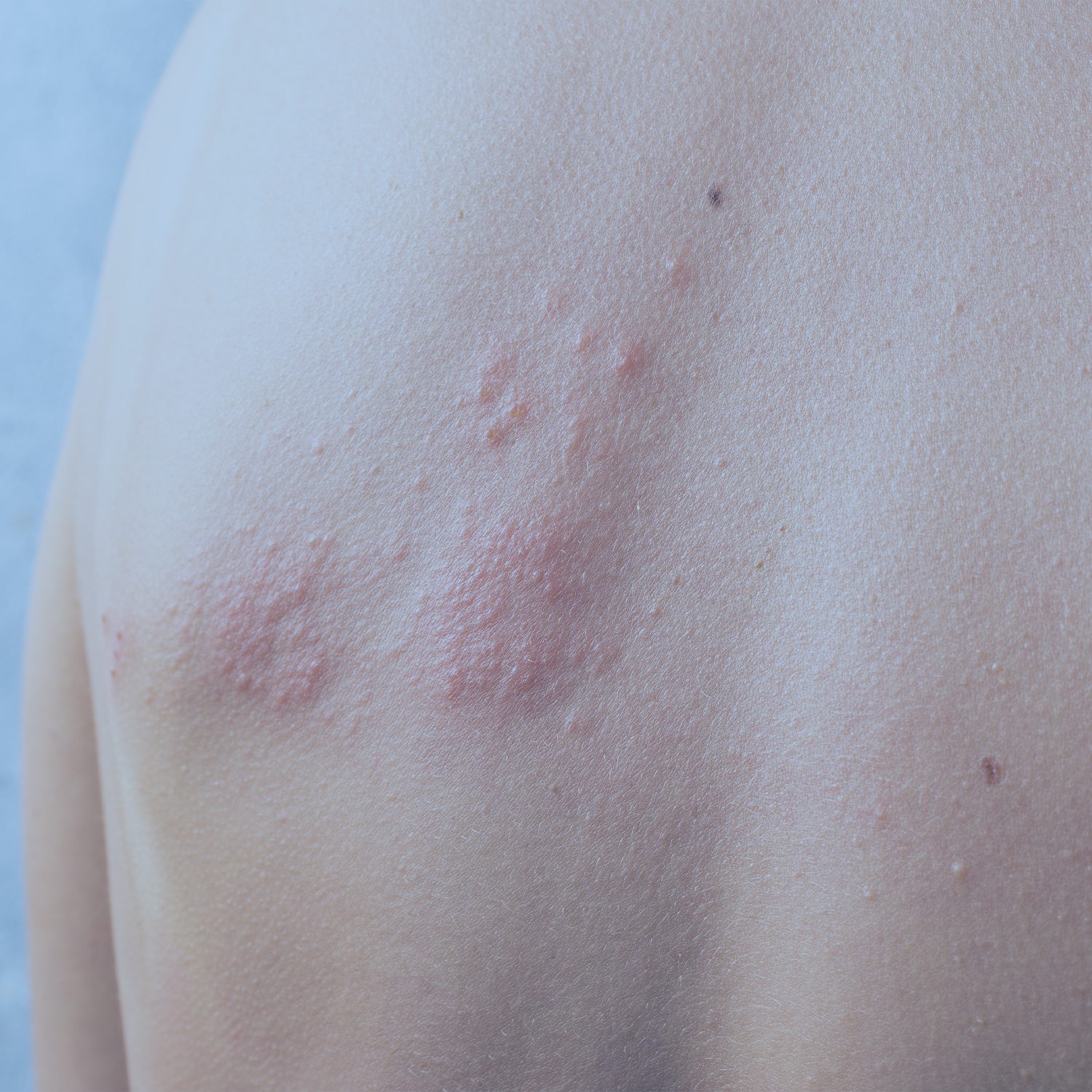


Molluscum Contagiosum is a skin condition that most often afflicts babies and children, generally the pediatric population. Kids between 1 to 10 years old are most susceptible to the virus, especially kids that spend an extended period in daycare where germs are often spread. However, anyone can be affected by the MCV (Molluscum Contagiosum Virus) – especially people with weak immune systems or those who are sexually active with more than one partner. Even without treatment, the condition can clear up on its own within a couple of months to a year. But if you cannot wait for it to disappear, you should consider the natural remedies for molluscum contagiosum.
Table of Contents
You will learn the following from this post:
What is Molluscum Contagiosum?
Molluscum contagiosum is a skin infection that mainly occurs in children. Molluscum contagiosum is caused by a virus; therefore, it can be easily transmitted through direct contact with the skin of someone infected. MCV is very contagious, but it is no longer contagious as soon as all the bumps are gone.
The virus behind molluscum contagiosum usually results in noticeable and several bumps that resemble warts on a child’s skin. Although there are some invasive treatments like surgical removal, you can decide to try natural remedies for molluscum contagiosum to reduce the appearance of these bumps.
Picking or scratching at the bumps can cause the infection to spread. And the condition can call for serious concern when it affects infants and appear on the face or genitals.
Symptoms of Molluscum Contagiosum
Because molluscum contagiosum creates bumps on the skin, most people mistake the virus for chickenpox, warts, skin cancer, and even STDs such as herpes. Symptoms of the condition develop about seven weeks after exposure to the virus. Although the symptoms are not always severe and are hardly anything to worry oneself about, the virus can still be a form of a nuisance to a person, especially since the symptoms can remain on the body for months or even more than a year – and the virus is contagious within this time.
The most common symptoms of MCV include the following:
- Flesh-colored or pink bumps on the skin. The bumps can appear round, firm, dome-shaped, and smooth at the top. The bumps can sometimes blend into the skin, but they are easy to spot because they have a tiny indentation at the top. Therefore, it is easy for doctors to misdiagnose molluscum contagiosum as warts or vice versa because they look similar to each other.
- Moderate cases of MCV will have about 10 to 20 bumps developing on the skin. People with weak immune systems due to illnesses like AIDS or autoimmune disorders may develop more bumps on their skin.
- Skin discomfort and itching.
- Sensitivity to touch and heat.
- Those who suffer from other types of skin conditions like dermatitis or eczema may develop severe molluscum contagiosum. For example, when eczema appears simultaneously as MCV, then painful molluscum eczema (or eczematous eruption) may be experienced.
Symptoms of MCV may occur anywhere on the body, but they are usually common on the chest, limbs, and face. Research has revealed that the most common parts of the skin affected by MCV in adults include the inner thighs, abdomen, genitals, hands, arms, armpits, neck, and face.
When adults develop the symptoms of molluscum contagiosum on their genitals, they might be agitated that they have caught a sexually transmitted disease. Transmission via sexual contact is deemed the most common form of transmitting molluscum contagiosum among adults. Although MCV symptoms might look like those caused by STDs like herpes, the condition is usually not considered an STD.
Causes of Molluscum Contagiosum
The MCV is a kind of DNA poxvirus shared by skin-to-skin contact, making it a very contagious virus. The MCV has a few things in common with chickenpox because it usually occurs in kids and results in a skin rash. However, person-to-person contact is not the only way the virus can spread, and it can also spread due to exposure to contaminated fabrics.
Risk factors for developing the molluscum contagiosum virus include the following:
- Living in close quarters with people affected, such as a university, military base, boarding school, or college.
- Working closely with affected people, especially if your work makes you touch their skin – such as in a healthcare setting, personal trainer, massage therapist, hairdresser, etc.
- Using public gyms and other fitness facilities, especially when you touch surfaces that the virus must have contaminated. It becomes worse when you do not shower immediately afterward.
- Playing contact sports like football, wrestling, etc.
- Using public toilets and bathrooms without washing your hands.
- Living in a tropical climate.
- Sharing clothing and towel with people who may be carriers of the virus.
- Having a weakened immune system due to a medical condition like AIDS or from going through cancer treatments.
- Having more than one sexual partner.
- Spending time in school or at daycare.
Medications for the Treatment of Molluscum Contagiosum Infections

There are various topical medications you can use to treat MCV. Your health professional may prescribe any of the following topical agents that you can directly apply to the lesions:
- Imiquimod cream
- Cantharidin
- Tretinoin cream
- Potassium hydroxide
- Salicylic acid
- Trichloroacetic acid
Many have used Cimetidine, the anti-heartburn, and anti-ulcer oral medication to molluscum contagiosum in kids as an alternative to other therapies. However, it can be potentially difficult to treat patients that have weak immune systems.
In addition to the medications already mentioned above, you can also use some antiviral agents like zidovudine, ritonavir, and cidofovir. For patients with AIDS, medications that target HIV and boost the immune systems may work for them, but the efficacy of these medications on MCV is rather uncertain.
Natural Remedies for Molluscum Contagiosum

Many natural remedies for molluscum contagiosum won’t necessarily cure the condition, but they will relieve the symptoms, such as the tingling and itching sensations that may occur. Most of the bumps will disappear on their own in time. Always consult your pediatrician before starting any home remedy to ensure that the treatment does not cause more harm than good. The following natural remedies for molluscum contagiosum are pretty effective in dealing with the symptoms of the condition:
1. Tea Tree Oil
You can get this oil from most drug stores and health stores. Applying tea tree oil with iodine twice a day on your skin will significantly reduce Mollusca lesions. Tea tree is an antiseptic, but they can cause an allergic reaction in some infants. Test a small unaffected area of your child’s skin with the oil, and if there is no reaction after a day, you can use it on the MCV. Do not apply tea tree oil on a child who is not old enough to know that the oil should not be ingested.
2. Australian Lemon Myrtle
Another effective home remedy is the Australian lemon myrtle. Applying about 10 percent solution of this remedy once a day will reduce the condition’s symptoms by 90 percent or more. You can purchase Australian lemon myrtle in most health food stores. Lesions will typically reduce after 21 days of consistent application.
3. Coconut Oil
Coconut oil is a soothing oil for skins, and it is extracted from the kennel of mature coconuts from the coconut palm. The oil contains high fatty acids that help in preventing the skin from drying out. The fatty acids it contains also have anti-inflammatory properties. You can help the skin retain moisture by applying coconut oil to irritated skin. You can get coconut oil from most drug stores and health food stores. However, avoid coconut oils that contain perfumes because the perfume can irritate the skin.
4. Colloidal Oatmeal Baths
You can soothe your itchy and irritated skin with a colloidal oatmeal bath. Just add finely grounded colloidal oatmeal to your warm bath water and soak yourself in it. Oatmeal contains particular triglycerides (these are fatty acids that contain anti-inflammatory properties). You can buy packets of colloidal oatmeal at discount superstores or in most drug stores. Alternatively, you can make your bath by simply grinding oats in a coffee bean grinder or food processor. To make sure that you have ground the oat enough, add a spoonful of it to warm water. You may have to grind the oat further if it does not turn the warm water into a milk-like texture.
Do not stay in the bath for more than fifteen minutes because staying in it for too long could dry out your skin, thereby worsening your MCV. However, you do not necessarily have to take a bath with it; you can mix the colloidal oatmeal in a glass or bowl and dip wash in it, applying the washcloth to the affected areas of the skin.
5. Apple Cider Vinegar
Apple cider vinegar is an impressive remedy for this condition. Use a clean cloth swab to apply undiluted apple cider vinegar to areas of tingling or itching skin. Leave the swab in that area for several hours; you can keep it in place with a bandage to prevent it from falling off. However, if you know your skin (or your child’s skin) is very sensitive, you may have to dilute the ACV with a bit of water. If you notice that it irritates the skin, immediately remove the swab and wash the apple cider vinegar off the skin. That means it’s not fit for that particular skin. You should consider other home remedies instead.
6. Other Essential Oils
Some essential oils may demonstrate antiviral properties that will help reduce tingling, itching, and the appearance of skin bumps. These essential oils include:
- oil of oregano
- lavender oil
- thyme
- eucalyptus
- neem oil
Blend just a few drops of one or more of the oils mentioned above with a carrier oil like jojoba or coconut oil. For a dilution of 2 percent, blend 12 drops of any essential oils with a fluid ounce of carrier oil. Apply the solution to the skin once or twice every day.
You should always carry out a patch test before applying any new essential oil to your skin.
7. Zinc Oxide Cream
You can get zinc oxide cream from any local pharmacy. This home remedy is another effective one against the symptoms of molluscum contagiosum, and a lot of people use it to treat other skin conditions, such as baby diaper rash.
8. Increase Immune Function
If your MCV takes too long to heal, it may indicate that your immune system is weak. You can increase immune function and boost protection against MCV by doing the following:
- Treating allergies, nutrient deficiencies, and underlying health conditions such as autoimmune disorders.
- Getting enough physical activity.
- Limiting your level of stress.
- Getting adequate sleep, which usually is about 7 to 9 hours each night, or more for children.
- Avoiding inflammatory foods like processed vegetable oils, refined grains, added sugar, packaged foods with processed meats, and synthetic ingredients.
- Eating a nutrient-dense diet, especially foods with high antioxidants, such as various fruit and vegetables. Probiotic foods are also crucial for the health of the gut and for reducing inflammatory reactions.
Final Thoughts
Anyone experiencing the symptoms of ACV should see their doctor immediately before using the natural remedies for molluscum contagiosum. It is essential to discuss these home remedies with your doctor first before beginning treatment to avoid complications like the feeling of self-consciousness, inflamed and red skin, conjunctivitis (pink eye, especially when bumps appear around the eye), and infection from constant scratching of the bumps.
Make sure you practice good hygiene and take other measures to avoid the spread and recurrence of the infection.
Post Disclaimer
The information contained in this post "8 Natural Remedies for Molluscum Contagiosum" is for educational purposes only. Always consult your primary care doctor before using the remedies that are provided. The information is provided by The Hidden Cures and while we do timely, in-depth research on the information that we provide to you, everything stated may not be up to date or accurate from the time it was written.



